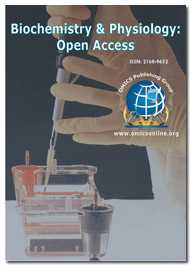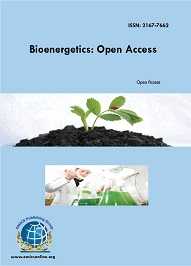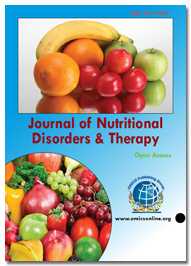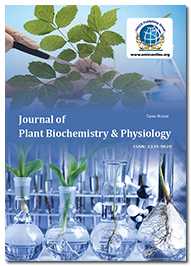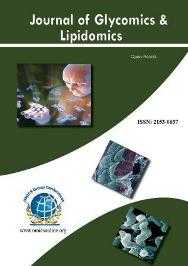Theme: Solving the Impetus of Innovations in Lipid World
Lipids 2015
OMICS International Conferences invites all the participants from all over the world to attend "International Conference on Lipid Science & Technology' during November 30- December 02, 2015 in San Francosco, USA which includes prompt keynote presentations, Oral talks, Poster presentations and Exhibitions.
Lipids 2015 Conference is a must attend as it will provide an in depth view of world-class, interdisciplinary research discussion from basic science researchers through clinical investigators to become leaders in research on lipid metabolism and its relation to cardiovascular disease, diabetes, obesity, atherosclerosis, metabolic diseases, immunological diseases, and cancer etc.
In addition to basic and clinical research opportunities, the workshop and symposium includes vibrant poster presentations, unpublished research presentations and a seminar program that hosts lectures from foremost lipid biology experts from around the globe and also allows for enhanced interactions leading to development of collaborations through sharing of resources and expertise. This conference provides a collegial and informal setting for close interactions between scientists from industry and academia.
Why to attend:
Lipids-2015 could be an exceptional event that brings along a novel and International mixture of giant and medium lipid research analysis, leading universities and Companies establishments creating the conference an ideal platform to share expertise, foster collaborations across trade and world, and assess rising technologies across the world. World-renowned speakers, the most recent techniques, tactics, and the newest updates in the field of lipids science and Novel treatment methods for CVD’s and Obesity are hallmarks of this conference.
Target Audience
Scientists and Doctors, Healthcare Professionals, Pharmaceutical researchers, Clinical organizations, Educational institutes,Academic Professionals, Pharma Industries, Manufacturing Medical Devices Companies, Medical Colleges
Importance and Scope:
Lipid disorders are the broad term for abnormalities of cholesterol and triglycerides. Lipid abnormalities are associated with an increased risk for vascular disease, and especially heart attacks and strokes. Abnormalities in lipid disorders are a combination of genetic predisposition as well as the nature of dietary intake. Many lipid disorders are associated with being overweight. Lipid disorders may also be associated with other diseases including diabetes. There is accumulating evidence that management of cholesterol and triglyceride disorders is associated with the reduced risk for heart attacks and strokes.
Today two-thirds of adults and nearly one-third of children struggle with overweight and obesity .If obesity rates stay consistent, by 2030, 51 percent of the population will be obese.Twenty years ago, no state had an obesity rate above 15 percent. Today there are 41 states with obesity rates over 25 percent, according to the Trust for American's Health. Since 1980, the rate of obesity in children and adolescents has almost tripled.72% of older men and 67% of older women are now overweight or obese. Obesity is linked to more than 60 chronic diseases. According to the American Cancer Society, 572,000 Americans die of cancer each year, about one-third of these cancer deaths are linked to excess body weight, poor nutrition and/or physical inactivity. Over 75 percent of hypertension cases are directly linked to obesity. Approximately two-thirds of U.S. adults with type 2 diabetes are overweight or have obesity For More...
OMICS International Conferences invites all the participants from all over the world to attend 'International Conference on Lipid Science & Technology' during November 30-December 02, 2015 in San Francisco, USA which includes prompt keynote presentations, Oral talks, Poster presentations and Exhibitions.
Lipids 2015 Conference is a must attend as it will provide an in depth view of world-class, interdisciplinary research discussion from basic science researchers through clinical investigators to become leaders in research on lipid metabolism and its relation to cardiovascular disease, diabetes, obesity, atherosclerosis, metabolic diseases, immunological diseases, and cancer etc.
Track 1: Lipids in molecular medicine
The Injectable Drug Delivery Market by Formulations [Liposomes, Microspheres, & Nanoparticles], Devices & Therapeutics [Diabetes & Oncology] - Global Forecasts to 2017, analyzes and studies the major market drivers, restraints, and opportunities in North America, Europe, Asia-Pacific, and Rest of the World. Global injectable drug delivery technologies market over the forecast period of 2012 to 2017. The global injectable drug delivery technologies market was valued at $22.5 billion in 2012; it is expected to reach $43.3 billion by 2017 at a CAGR of 14.0% from 2012 to 2017. Injectable drug delivery technologies are the combination of two major segments; devices and formulations. This market insight report on Liposomes gives an insight into global Liposomes market. The study also provides information regarding products and technologies in the field of Liposomes. Business profiles of 46 major companies are discussed in the report. The report covers more than 330 companies that are engaged in Liposomes research and supply of products and/or services. The global liposomes’ market is projected at a CAGR of 15%, through 2005-2015.
Clinical drugs that interact with membrane lipids and that modify the composition and structure of cell membranes can change the localization and/or activity of membrane proteins. Lipids can act as ligands of lipid-activated nuclear receptors in controlling inflammatory signaling through bioactive lipids such as leukotrienes, prostaglandins, lipoxins and protectins, and alters immune response as intracellular phospholipid- or sphingolipid-derived signaling mediators. Chronic renal disease is accompanied by characteristic abnormalities of fat metabolism, which appear as a consequence of nephrotic syndrome or renal insufficiency and are reflected in an altered apolipoprotein profile as well as elevated plasma lipid levels. Recent experimental studies have suggested a correlation between the progression of renal disease and dyslipidemia. Several lines of evidence suggest that the major risk factors (hypertension, type 2 diabetes, hyperlipemia) elicit oxidative stress at the luminal surface of vascular wall that will be further responsible for the oxidative damage of lipoproteins in the blood stream, generation of lipid peroxides, ROS and platelet accumulation and activation of macrophages. Liposomes and nanoparticles have emerged as a promising potential drug delivery system. Current uses of approved liposomal formulations of chemotherapy have already shown advantages in the treatment of cancers when compared to conventional chemotherapies. The control of fat metabolism is often mediated by nuclear receptors (NR), which are ligand-regulated transcription factors that play a central role in the cell's ability to sense and respond to lipophilic signals by modulating the appropriate target gene cluster. Nanotechnology is an approach to overcome the challenges of conventional drug delivery methods. Nanoparticles are synthesized from solid lipid are alternative novel colloidal drug carrier to alter and improve the pharmacokinetic and pharmacodynamics properties of drug molecules. Hence, solid lipid nanoparticles hold great promise for reaching the goal of controlled and site specific drug delivery and have attracted wide attention of researchers.
Related Conferences:
9th Indo Global Summit on Cancer Therapy November 02-04, 2015 Hyderabad, India ; 7th Global Summit on Cancer Therapy October 05-07, 2015 Dubai, UAE; 5th International Conference and Exhibition on Cell and Gene Therapy May 19-21, 2016 San Antonio, USA; 6th World Congress on Cell & Stem Cell Research February 29-March 02, 2016 Philadelphia, USA;6th International conference of Phospholipase A2 and Lipid Mediators (PLM2015), Shinjuku (a central downtown of Tokyo), Japan, 10-12 February 2015; 22-25 March 2016 Cardiolipin as Key Lipid of Mitochondria in Health and Disease, Florence, Italy, 30 September -1 October 2015; The XIX Lipid Meeting Leipzig, BIO CITY, Leipzig, Germany, 10-12 December 2015; Lipids and Health: Risk, Reward and Revelation, London, UK, 16-17 November 2015;
Track 2: Lipids in signaling and intracellular trafficking
Understanding the mechanisms of intracellular trafficking and its interaction with other signaling molecules may lead to novel approaches in the treatment of a number of hematologic and other diseases. NIH has invested $127,980 in this specific area in 2015.
Lipid rafts/caveolae flask-shaped structures are rich in proteins as well as lipids such as cholesterol and sphingolipids and have several functions in signal transduction. They play a role in cancer cells development, endocytosis and the uptake of pathogenic bacteria and certain viruses. Studies that have helped to elucidate the role of lipid rafts in signaling via receptor tyrosine kinases and G protein-coupled receptors. Though the plasma membrane may contain microdomains with a variety of different lipid compositions, cholesterol and sphingolipid rich microdomains, named lipid rafts, have been the most intensely scrutinized. Rafts are postulated to regulate protein–protein interactions by laterally segregating proteins according to their affinity for ordered membrane domains. Cholesterol is an amphipathic molecule like phospholipid moiety and cholesterol plays an important role in maintaining the integrity of the membrane and is also involved with cell to cell signalling process.
Lipid phosphate phosphatases (LPPs) regulate cell signaling by modifying the concentrations of lipid phosphates versus their dephosphorylated metabolic intermediates. The extremely low aqueous solubility of long chain fatty acids (LCFA) together with the very high affinity of serum albumin and cytoplasmic fatty acid binding proteins for LCFA have challenged the limits of technology in resolving the individual steps of the process. Bioactive lipids, such as eicosanoids, endocannabinoids and lysophospholipids are endogenous signaling molecules with wide spectrum of pathophysiological functions in regulating cellular activities. Recent studies describes that lipid modification influences the movement of a signaling protein within the cell and its final destination. Nonvesicular transport could occur by transport of lipid monomers through the cytosol or by transfer of lipids at regions of close apposition between cell membranes. Several lipid transfer proteins and mutants defective in lipid transport have been identified and isolated, the precise roles of proteins in net transport and sorting of lipids remain unclear. G protein-coupled receptors (GPCRs) modulate diverse physiological and behavioral signaling pathways by virtue of changes in receptor activation and inactivation states.
Related Conferences:
4th International Conference on Integrative Biology July 18-20, 2016 Berlin, Germany; 3rd International Conference on Genomics & Pharmacogenomics September 21-23, 2015 San Antonio, USA; World Congress on Human Genetics October 31- November 02, 2016 Valencia, Spain; Unconventional Protein and Membrane Trafficking, Lecce, Italy 4—7 October 2016; 5th Leipzig Symposium, "Analytics and Technology" Leipzig, Germany, 9-10 March 2016; Organelle Crosstalk in Membrane Dynamics and Cell Signalling, Edinburgh, UK, 26-29 October 2015; GPCRs: Beyond Structure Towards Therapy, Monash University Prato Centre, Italy, 16-18 September 2015; Modeling Approaches in Molecular Signalling, University College London, UK, 13 November 2015;
Track3: Protein-Lipid & Lipid- Lipid interactions
An individual lipid molecule will remain in the annular shell around a protein for only a short period of time. Binding to the annular shell shows relatively little structural specificity. Voltage-gated channels are key transducers of membrane potential changes into intracellular transients that initiate many physiological events. Micelle is an aggregate of surfactant molecules dispersed in a liquid colloid. Micelles are important in many uses of surfactants for their capacity to solubilize water-insoluble compounds. Vesicles are model systems for biological cells and can be used for entrapping active compounds in their insides. Monolayer techniques were used to study the interactions of various lipids (cholesterol, lysophosphatidyl choline, phosphatidal ethanolamine, phosphatidyl choline, sphingomyelin, stearic acid, and lipids extracted from plasma high density lipoproteins and very low density lipoprotein) with the lipid-free protein subunit of rat plasma high density lipoprotein and with plasma albumin. Lipid microarrays will provide an integrated knowledge base for the human lipidome. Exogenous fat is transported in chylomicrons from the intestine to the liver. After entry in the blood stream the chylomicrons are hydrolyzed by the endothelial-bound lipoprotein lipase. The chylomicron remnants are rapidly taken up into the liver via the LDL receptor and the LDL receptor-related protein. Apolipoprotein E and lipoprotein lipase are the recognition signals for these receptors. The liver utilizes the exogenous fat and can release surplus lipids via VLDL into the blood. The VLDL is another substrate for lipoprotein lipase. The remaining VLDL remnants can either be taken up into the liver or are hydrolyzed to LDL. Both these forms of hyperlipoproteinaemias are the most frequent and represent major risk factors for arteriosclerosis.
Related Conferences:
International Conference on Protein Engineering October 26-28, 2015 Chicago, USA; World Congress on Amino Acids and Proteins December 08-09, 2016 Baltimore, USA; 2nd International Conference on Transcriptomics August 18-20, 2016 Portland, Oregon USA; International Conference on Next Generation Sequencing July 21-22, 2016 Berlin; International Symposium on Lipid Oxidation and Antioxidants5-7 June 2016, Porto, Portugal, Membrane Proteins From A to Z, University of Leeds, UK. 16-17 December 2015; Phosphatases and Signalling in Health and Disease, University of Bath, UK, 20-22 June 2016; Leucine Rich Repeat Kinase 2: Ten Years Along the Road to Therapeutic Intervention, Henley Business School, UK, 11-13 July 2016;
Track 4: Lipid and Lipoprotein Metabolism
The total cost of reducing low-density lipoprotein includes the costs of physician services, lifestyle counseling, screening, case finding and monitoring, dietary and exercise modifications, medications, and treating side effects. The annual cost of statin drugs to reduce low-density lipoprotein cholesterol levels can range from $1,082 to $1,543 per year. The cost of follow-up or treatment-related appointments varies by type of provider, location, and practice setting. Although the cost of reducing low-density lipoprotein cholesterol levels can be high, it is much lower than the direct and indirect costs of cardiovascular disease.
In 2002, the National Cholesterol Education Program (NCEP) panel found that, on the basis of current retail prices for lipid-lowering drugs, low-density lipoprotein-lowering drug therapy is highly cost-effective for persons with established coronary heart disease (including a prior coronary heart disease event); cost-effective for the primary prevention of coronary heart disease in persons with a coronary heart disease risk equivalent (the person does not have coronary heart disease but does have an absolute 10-year risk of developing major coronary events, such as myocardial infarction and coronary death, equal to that of persons with coronary heart disease), and those at high risk for coronary heart disease; and acceptable for the primary prevention of coronary heart disease in persons whose 10-year risk of "hard coronary heart disease" (heart attack and death from coronary heart disease) is between 10% and 20%.
The National Cholesterol Education Program recommends using dietary therapy, which is more cost-effective than low-density lipoprotein-lowering drugs, as the first-line therapy in persons with a 10-year risk of coronary heart disease that is less than 10% per year.
Elevated plasma triglycerides and very-low-density lipoproteins are directly associated with the risk of atherosclerotic heart disease, although not as independent risk factors. In contrast, high levels of high-density lipoprotein cholesterol have been found to be a protective factor for the development of that disease, so that decreased levels constitute a risk factor. Atherosclerosis is characterized by vascular obstruction from the deposits of plaque, resulting in reduced blood flow. Plasma lipoproteins have traditionally been grouped into five major classes, based on their buoyant density: chylomicrons, very low-density lipoproteins (VLDL), intermediate-density lipoproteins (IDL), low-density lipoproteins (LDL), and high-density lipoproteins (HDL). Since lipids are not soluble in blood, they are transported as lipoproteins after reaction with water-soluble proteins in the blood. Lipids in the blood are absorbed by liver cells to provide energy for cellular functions. Excess lipids in the blood are eventually converted into adipose tissue. Abnormally high levels of triglycerides and cholesterol are thought to be involved in hardening of the arteries. In nondiabetic persons of normal weight, administration of insulin leads to an increase in glucose up- take by insulin-sensitive tissues, inhibition of lipolysis, and a decrease in serum levels of free fatty acids. However, in insulin-resistant states accompanied by hyperinsulinemia, such as occur in obesity and type II diabetes, there is resistance to results in increased fat breakdown and increased serum levels of free fatty acids and glycerol. The increased glycerol resulting from lipolysis tends to drive gluconeogenesis by mass effect, thereby leading to increased glucose production by the liver, further contributing to hyperglycemia. Lipid storage diseases are a group of inherited metabolic disorders in which harmful amounts of fatty materials (lipids) accumulate in various tissues and cells in the body. Lipid storage diseases are inherited from one or both parents who carry a defective gene.
Related Conferences:
4th International Conference on Translational Medicine October 26-28, 2015 Baltimore, Maryland, USA; 4th International Conference and Exhibition on Nutrition October 26-28, 2015 Chicago, Illinois, USA; International Conference on Epilepsy & Treatment September 21-22, 2015 Baltimore, USA; Lipid and Lipoprotein Metabolism in Chronic Disease Pathogenesis and Treatment, June 12-17, 2016 Waterville Valley, NH; 57th International Conference on the Bioscience of Lipids, Chamonix, France, September 23 - 27, 2016; Recent Advances in Lipoprotein Physiology and Related Disease, Waterville Valley, NH, June 11-12, 2016;
Track5: Fats - cardio metabolic risks
The economic burden of lipid disorders is substantial because of the impact of lipid levels on the risk of cardiovascular disease and coronary heart disease events. The direct and indirect costs of all types of cardiovascular disease in 2015 were estimated to be $706.2 billion. The cost of cardiovascular disease exceeds that of any other high-cost medical conditions. For example, in 2008, the estimated total cost of all cancers was $228 billion and in 2007, the cost attributable to diabetes mellitus was $174 billion.
Heart disease and stroke are not only a major cause of premature death in persons younger than 65 years but also are major causes of serious disability in the United States. The indirect costs of cardiovascular disease, including those related to lost productivity, are enormous. It is estimated that the indirect cost of cardiovascular disease will total more than $279.1 billion in 2014.
The cost of implementing a lipid screening program varies by location, provider base, method of screening, which cholesterol measurements are taken, and other factors. The average cost of a single cholesterol or lipid profile test is relatively low but the cumulative costs of screening can be substantial, especially if all recommended screening and follow-up procedures are followed. In 2008, the private-sector cost of annual visits to lower LDL cholesterol averaged $74 per session.
Coronary heart disease is recognized to be the cause of death for 80% of people with diabetes. Diabetes is treatable, but even when glucose levels are under control it greatly increases the risk of heart disease and stroke. High blood pressure has long been recognized as a major risk factor for cardiovascular disease. Obesity is a major risk factor for cardiovascular disease and has been strongly associated with insulin resistance. Physical inactivity is another modifiable major risk factor for insulin resistance and cardiovascular disease. Fish, plant, and nut oils are the primary dietary source of omega-3 fatty acids. Omega-3 fatty acids are cardioprotective mainly due to beneficial effects on arrhythmias, atherosclerosis, inflammation, and thrombosis. The latest dietary guidelines call for five to thirteen servings of fruits and vegetables a day (2½ to 6½ cups per day), depending on one’s caloric intake. Another constant threat comes from nasty chemicals called free radicals. They are capable of damaging cells and genetic material. The most familiar ones are vitamin C, vitamin E, beta-carotene, and other related carotenoids, along with the minerals selenium and manganese. Numerous clinical trials are underway testing a type of stem cell found in bone marrow, called mesenchymal stem cells or MSCs, to see if they are effective in treating the form of CHF that follows a heart attack. While those trials have shown some small improvements in patients the researchers have not found that the MSCs are creating replacement heart muscle. Most of these involve looking for ways to create stem cells that can replace the damaged heart muscle, restoring the heart’s ability to efficiently pump blood around the body.
Related Conferences:
6th International Conference on Clinical & Experimental Cardiology, November 30-December 02 2015, USA; 8th Global Cardiologists Annual Meeting, July 18-20 2016, Germany; International Conference on Interventional Cardilogy, September 12-14 2016, Germany; European Cardiology Congress, October 24-26 2016, Spain; 8th International Conference on Clinical & Experimental Cardiology, November 14-16 2016, California; 4th International Conference on Prehypertension, Hypertension & Cardio Metabolic Syndrome, March 03-06 2016, Italy; The Pacific Northwest Cardiovascular Summit, October 03-04 2015, Oregon; Hypertension 2015, September 16-19 2015, USA; 3rd Annual International Conference on Cardiology & Cardiovascular Medicine Research, February 22-23 2016, Singapore; 3rd International 4 Corners of Cardiology Meeting, February 05-06 2016, Australia
Track 6: Obesity and Health
Today two-thirds of adults and nearly one-third of children struggle with overweight and obesity .If obesity rates stay consistent, by 2030, 51 percent of the population will be obese. Twenty years ago, no state had an obesity rate above 15 percent. Today there are 41 states with obesity rates over 25 percent, according to the Trust for American's Health. Since 1980, the rate of obesity in children and adolescents has almost tripled.72% of older men and 67% of older women are now overweight or obese. Obesity is linked to more than 60 chronic diseases. According to the American Cancer Society, 572,000 Americans die of cancer each year, about one-third of these cancer deaths are linked to excess body weight, poor nutrition and/or physical inactivity. Over 75 percent of hypertension cases are directly linked to obesity. Approximately two-thirds of U.S. adults with type 2 diabetes are overweight or have obesity
Obesity-associated arterial hypertension is characterized by activation of the sympathetic nervous system, activation of the renin-angiotensin system, and sodium retention, among other abnormalities. It is estimated that excess body weight, accounted for approximately 26% of cases of hypertension in men and 28% in women and for approximately 23% of cases of coronary heart disease in men and 15% in women. Obese individuals have an increase in fatty tissue that increases their vascular resistance and in turn increases the work the heart has to do to pump blood throughout the body. Indicators for risk of hypertension include obesity, abdominal obesity and weight gain.
Anti-hypertension medications should be started if hypertension is diagnosed. But, with weight-loss, a significant fall in blood pressure may permit a decrease in the number of medications taken or decrease the amount of medication taken. Prevention would be better than any drug.
Given the important pathophysiologic links between weight and hypertension described, a significant increase in the prevalence of hypertension in coming years could be expected, if trends of increasing weight in the population are not stabilized and reversed.
Related Conferences:
4th International Conference & Exhibition on Obesity & Weight Management, December 07-09 2015, USA; 5th International Conference & Exhibition on Obesity & Weight Management, December 05-07 2016,USA; 6th Global Healthcare & Fitness Summit, August 22-24 2016,USA; Global Summit & Expo on Healthcare, November 9-11 2015, UAE; 5th World Congress on Controversies to Consensus in Diabetes, Obesity and Hypertension, November 05-07 2015, Turkey; British Hypertension Society Annual Scientific Meeting, September 21-23 2015, UK; Japanese Society of Hypertension 38th Annual Scientific Meeting, October 9-11 2015, Japan; Epigenetics, Obesity and Metabolism, October 11-14 2015, UK; 13th International Congress on Obesity, May 01-04 2016, Canada
Track 7: Lipidomics - What’s next?
In order to project the market size of iSONEP(A lipidomic strategic generated drug for blindness), we first estimate the current market size of its competitors. The current US sales volume of lipidomics suggests that about 800,000 doses were prescribed in 2012, which translates into ~130,000 patients (assuming six doses per year on average). The US preference for Avastin suggests that approximately 356,000 patients were treated in the same year. Eylea's sales volume translates into approximately 75,500 patients in 2012 (assuming bi-monthly injection). The total number of patients treated with these anti-VEGF drugs is thus about 561,000 in 2012. We assume a proportionate growth of the number of patients treated with anti-VEGF drugs with the total patient population.
The iSONEP is expected to launch in 2017. We project that in 2025 its market share will peak at 10% of the market currently captured by anti-VEGF drugs, and at 20% of the market currently not captured. We assume its cost to be $2,000 per dose, or $12,000 per year. Historical data suggest that a drug entering Phase II clinical trial has about 16% probability of eventual FDA approval. Taking all these into consideration and using a 20% discount rate, we project that iSONEP can contribute about 148.3 million USD to the NPV of the company, or $14.4 per share outstanding.
Lipidomics has been greatly facilitated by recent advances in, and novel applications of, electrospray ionization mass spectrometry (ESI/MS. Lipidomic studies play an essential role in defining the biochemical mechanisms of lipid-related disease processes through identifying alterations in cellular lipid metabolism, trafficking and homeostasis. The two major platforms currently used for lipidomic analyses are HPLC-MS and shotgun lipidomics. Recent expansion in research in the field of lipidomics has been driven by the development of new mass spectrometric tools and protocols for the identification and quantification of molecular lipids in complex matrices. The application of electrospray ionization to crude lipid extracts without prior fractionation-the so-called shotgun approach-is one such example, as it has perhaps been more successfully applied in lipidomics than in any other Recent technological advances in MS and chromatography have greatly enhanced the developments and applications of metabolic profiling of diverse lipids in complex biological samples. Lipidomics not only provide insights into the specific functions of lipid species in health and disease, but will also identify potential biomarkers for establishing preventive or therapeutic programs for human disease. Research is performed in one of more of six themes: 1) Mapping neurodegenerative lipidomes in models 2) High-throughput screening of underlying signalling mechanisms key regulators of lipid function 3) Identifying lipid-protein and lipid-lipid interactions that alter organelle or protein / lipid target function; 4) Characterizing and validating circulating lipid biomarkers 5) Identifying natural products and their active compounds that act as lipid modulators 6) Representing and statistically validating lipidomic changes, disseminating and communicating large datasets, developing hybrid biomedical representations and statistical models of neurodegenerative disease and Simulating effect of lipid metabolism (computational modeling).
Related Conferences:
3rd International Conference on Genomics & Pharmacogenomics September 21-23, 2015 San Antonio, USA, International Conference on Glycomics December 01-03, 2016 Chicago, USA ; 5th International Conference and Exhibition on Metabolomics May 16-18, 2016 Osaka, Japan; 6th International Conference and Exhibition on Metabolomics November 28-30, 2016 Atlanta, USA; 5th European Lipidomic Meeting, Sept 2-4, 2015, Swansea, UK; 11th GERLI Lipidomics Meeting, "Lipids in Agronomy, Health and Disease" , October 25-28, 2015, Bischoffsheim, France; LIPID MAPS Annual Meeting 2016: Lipidomics Impact on Metabolic, Cancer, Cardiovascular and Inflammatory Diseases , May 17 - 18, 2016, La Jolla, CA, USA;
Track 8: Plant, Microbial lipids and Essential Oils
Essential oils have been used for more than 5,000 years. Their origin can be traced back to the ancient civilization of Mesopotamia. In later years the technology of obtaining these oils spread to Egypt, India, Greece and Rome. The most commonly used essential oils are lavender, chamomile, peppermint, tea tree oil, eucalyptus, geranium, jasmine, rose, lemon, orange, rosemary, frankincense, and sandalwood.
Most of the trade in essential oils occurs in the European Union (EU), the North American Free Trade Area (NAFTA), South America and East Asia with very little or insignificant trade happening in Africa and in particular the SADC region. Over the past two decades there has been an increase in the amount of overall trade (imports and exports) in essential oils, from about just over US$616-million in 1990 to more than US$3.6-billion in 2005. The EU has inherently been the largest trader of essential oils. In 2005 it imported US$536m and exported US$765m of US$1.7bn and US$1.9bn world imports and exports, respectively. In the same period the north Atlantic free Trade Area (nAfTA) imported US$378m worth of imports and exported US$476m. SADC’s trade, which the main area of focus in this report is insignificant in the context of world trade – just about 1% overall. In 2005 exports and imports amounted to US$15.4m and US$25.8m, respectively. The opportunities for the region to increase its share in world trade are plenty. This is despite the fact that big established multinational corporations (i.e. end-users) have developed solid commercial relationship with suppliers that have a proven record of supplying high quality products.
Oxidation of polyunsaturated lipids by a definite portion of UV light leads to a modification of the plant lipids. Activated lipid extracts from plants induce intrinsic antioxidant and detoxification pathways of skin cells and this is in a healthy young person. Soybean, canola, wheat germ and walnut oil all have a decent amount of omega-3's, but much higher levels of omega-6 fatty acids - and this ratio of omega-3's to omega-6's is important. Health experts recommend an omega-6/omega-3 ratio of about 4:1.
Natural Food Colors find their use in food for enhancing the appearance and the appeal of processed food preparations. Essential oils are volatile and liquid aroma compounds from natural sources, usually plants. Essential oils are not oils in a strict sense, but often share with oils a poor solubility in water. Essential oils often have an odor and are therefore used in food flavoring and perfumery. Typically, essential oils are highly complex mixtures of often hundreds of individual aroma compounds. Microbial lipids are potential candidates and resources for the sustainable production of biofuels and value-added bioproducts as an alternative route and replacement of petro-based hydrocarbons and chemicals. For example, endophytic oleaginous fungi with high lipid-accumulating capabilities can be isolated from oil-rich seeds and plants.
Related Conferences:
Global Summit on Plant Science September 21-23, 2015 San Antonio, USA; International Conference and Expo on Oil and Gas November 16-18, 2015 Dubai, UAE; 5th International Conference on Agriculture & Horticulture June 27-29, 2016 Cape Town, South Africa; 2nd Global Summit on Aquaculture & Fisheries July 11-13, 2016 Kuala Lumpur, Malaysia; 22nd International Symposium on Plant Lipids 03-08 July 2016, Goettingen, Germany; 2nd High Oleic Oils Congress-HOC 2015, 2-4 September 2015, Paris, France; Trade Fair oils+fats, 15-17 September 2015, Munich, Germany; World Congress on Oils and fats and 31st ISF lectureship Series,October 31- November 04, Rosario, Argentina; Innovative Approaches towards a Sustainable Future 18-21 September 2016 Ghent, Belgium;
Track 9: Lipids and bioenergy
Algal biofuel is an alternative to liquid fossil fuels that uses algae as its source of energy-rich oils. Several companies and government agencies are funding efforts to reduce capital and operating costs and make algae fuel production commercially viable. Like fossil fuel, algae fuel releases CO2 when burnt, but unlike fossil fuel, algae fuel and other biofuels only release CO2 recently removed from the atmosphere via photosynthesis as the algae or plant grew. With current technology available it is estimated that the cost of producing microalgal biomass is $2.95/kg for photo bio reactors and $3.80/kg for open-ponds. These estimates assume that carbon dioxide is available at no cost. If the annual biomass production capacity is increased to 10000 tonnes, the cost of production per kilogram reduces to roughly $0.47 and $0.60, respectively. Assuming that the biomass contains 30% oil by weight, the cost of biomass for providing a liter of oil would be approximately $1.40 and $1.81 for photobioreactors and raceways, respectively. Oil recovered from the lower cost biomass produced in photobioreactors is estimated to cost $2.80/L, assuming the recovery process contributes 50% to the cost of the final recovered oil. Numerous Funding programs have been created with aims of promoting the use of Renewable Energy. In Canada, the ecoAgriculture biofuels capital initiative (ecoABC) provides $25 million per project to assist farmers in constructing and expanding a renewable fuel production facility. In Europe, the Seventh Framework Programme (FP7) is the main instrument for funding research. Similarly, the NER 300 is an unofficial, independent portal dedicated to renewable energy and grid integration projects.
Global warming can be slowed, and perhaps reversed, only when society replaces fossil fuels with renewable, carbon-neutral alternatives. Several microorganism-based options have the potential to produce large amounts of renewable energy without disruptions. Microorganisms can convert almost all of the energy in these wastes to methane, hydrogen, and electricity. In a second approach, photosynthetic microorganisms convert sunlight into biodiesel. Algae biofuels may provide a viable alternative to fossil fuels; however, this technology must overcome a number of hurdles before it can compete in the fuel market and be broadly deployed. These challenges include strain identification and improvement, both in terms of oil productivity and crop protection, nutrient and resource allocation and use, and the production of co-products to improve the economics of the entire system. Although there is much excitement about the potential of algae biofuels, much work is still required in the field. Solid wastes from industrial, commercial and community activities are of growing concern as the total volume of waste produced continues to increase. Palm oil mill effluent (POME), a strong wastewater from palm oil mills, has been identified as a potential source to generate renewable bioenergies through anaerobic digestion. Lipids are one of the major organic pollutants in POME. Furthermore, waste lipids are ideal potential substrates for biogas production. With these options (Renewable and sustainable bioenergies) we can help phase out our dependency on fossil fuels and find clean, efficient, sources of power.
Related Conferences:
2nd International Congress and Expo on Biofuels & Bioenergy, September 1-3, 2016, Sao Paulo, Brazil; Euro Global Summit and Expo on Biomass August 08-10, 2016 Birmingham, UK ; 3rd International Conference on Bioprocess and Biosystems Engineering September 14-15, 2015 Baltimore, USA; 2nd International Conference on Lipid Science & Technology October 06-08, 2016 Miami, USA IEA Bioenergy Conference 2015, Berlin, Germany, 27-29 October, 2015; International Bioenergy Exhibition and Asian Bioenergy Conference 2015, 21-23 October, Shanghai, China; Bioenergy Australia Conference 2015,Tasmania, 30 November - 2 December 2015; Bio Energy 2015, September 2-4,2015, Jyväskylä, Finland.
Importance and Scope:
Lipid disorders are the broad term for abnormalities of cholesterol and triglycerides. Lipid abnormalities are associated with an increased risk for vascular disease, and especially heart attacks and strokes. Abnormalities in lipid disorders are a combination of genetic predisposition as well as the nature of dietary intake. Many lipid disorders are associated with being overweight. Lipid disorders may also be associated with other diseases including diabetes, the metabolic syndrome (sometimes called the insulin resistance syndrome). There is accumulating evidence that management of cholesterol and triglyceride disorders is associated with the reduced risk for heart attacks and strokes. This is especially true in patients seen by endocrinologists who have diabetes mellitus or other problems associated with obesity.
Elevated total cholesterol is most commonly a problem in patients who have elevated LDL cholesterol levels. Moderate elevations of LDL cholesterol are more common. These moderate elevations are still associated with heart disease risk. There are well established standards for what the targets of LDL cholesterol should be based on risk adjustment profiles. For example, young people with no heart disease risk factors have higher LDL cholesterol targets than patients who have diabetes or established heart disease.
Hypertriglyceridemia is associated with increased heart disease risk. Hypertriglyceridemia is commonly associated with obesity and diabetes mellitus. The medications used for treating triglycerides are often different than those used to lower LDL cholesterol. Treatment of contributors to high triglycerides including reduction in body weight and the management of diabetes mellitus are also important. Some medications used to lower blood sugar will also have a favorable effect on triglycerides. Isolated low cholesterol, low HDL cholesterol is quite uncommon. Most of the time low HDL cholesterol is associated with high triglycerides. It is well known that low HDL cholesterol contributes to heart disease risk. Exercise is important in helping to raise HDL cholesterol.
The metabolic syndrome is a term to describe patients who have central obesity, elevations of blood sugar (including diabetes), elevations in blood pressure as well as a lipid disorder characterized as high triglycerides, low HDL (and often mildly elevated LDL).
Epidemiology of Condition/Disease:
Between 2005 and 2006, about 21% of adults aged 20 years and older in the United States had high levels of low-density lipoprotein cholesterol. Clinical studies have repeatedly shown a strong and graded relationship between increasing levels of low-density lipoprotein cholesterol ("bad" cholesterol) and increasing risk of coronary heart disease events. Low levels of high-density lipoprotein cholesterol levels are strongly associated with increased risks of coronary heart disease. Evidence from clinical trials suggests that increasing high-density lipoprotein cholesterol ("good" cholesterol) levels reduces the risk of coronary heart disease.
Abnormal lipid levels contribute to the development of cardiovascular diseases, including coronary heart disease, stroke, and coronary atherosclerosis. Coronary heart disease, which kills more Americans than any other single disease, can lead to angina pectoris (heart pain), heart attack, or both. One American has a coronary attack about every 25 seconds, and about 34% of people who experience a coronary attack will die from it in any given year. At age 40, a man in the United States has a 49% chance and a woman has a 32% chance of having a coronary heart disease event (such as a heart attack) in his or her lifetime.
Why San Francisco??
Depending on the Compound annual growth rate lipid disorders market America stands in first rank next comes European countries and Asia. So the Lipids-2015 in going to be held in America
Metropolitan San Francisco is a major regional hub for the health care industry and boasts a small, globally competitive manufacturing sector. San Francisco is having 9 major universities, 9 societies which are working on the field. USA is having major research institutes and information centers on lipid disorder sciences.
Conference Highlights:
Lipids in Molecular Medicine
Lipids in Signaling and Intracellular Trafficking
Protein-Lipid and Lipid-Lipid Interactions
Lipid and Lipoprotein Metabolism
Fats - Cardio metabolic Risk
Obesity and Health
Plant, Microbial lipids, Essential Oils – Future vision
Lipids and Bioenergy
Lipidomics - What’s next?
Why to attend:
Lipids-2015 could be an exceptional event that brings along a novel and International mixture of giant and medium lipid research analysis, leading universities and Companies establishments creating the conference an ideal platform to share expertise, foster collaborations across trade and world, and assess rising technologies across the world. World-renowned speakers, the most recent techniques, tactics, and the newest updates in the field of lipids science and Novel treatment methods for CVD’s and Obesity are hallmarks of this conference.
A Unique Opportunity for Advertisers and Sponsors at this International event:
http://lipids.conferenceseries.com/sponsors.php
Lipid Associations in California
National lipid association
American Heart Association
California Medical Association
California Pediatric Medical association
California Neuropathic Doctors association
California Heart Disease and Diabetes Prevention Unit
Alameda-Contra Costa Medical Association (ACCMA)
Los Angeles County Medical Societies
Orange County Medical Association
Riverside County Medical Association
Major Diabetic and Obesity Associations in USA:
American Society for Metabolism and bariatric Surgery
National Institute of Neurological Disorders and Stroke
National Niemann-Pick Foundation
National Organization for Rare Disorders
National Tay-Sachs and Allied Diseases Association
International Association for the Study of Obesity
American Diabetes Association
American Heart Association
International Association for the Study of Obesity
Association for Coordination and Research in Obesity and Nutrition
American Association of Diabetes Educators (AADE)
Information centers and Institutes in USA and Abroad:
The Academy for Eating Disorders
The Academy of Nutrition and Dietetics
American Council on Exercise
American Physiological Society
American Society for Nutrition
Canadian Obesity Network
Centers for Disease Control
European Association for the Study of Obesity
Harvard School of Public Health - The Obesity Prevention Source Website
International Obesity Task Force
National Board of Physician Nutrition Specialists (ABPNS)
Obesity Action Coalition
S.T.O.P Obesity Alliance
Weight Control Information Network
CDC: Healthy Youth
CDC: Overweight and Obesity
F as in Fat
Family and Weight Loss
KidsHealth.org - Nutrition & Fitness Center
National Heart, Lung, and Blood Institute of the National Institutes of Health
National Diabetes Information Clearinghouse
Shape Up America
US Department of Health and Human Services: Childhood Obesity
Yale Rudd Center for Food Policy & Obesity
Yale Rudd Center for Food Policy & Obesity
Research Centers and Universities involved in USA:
Aberdeen Centre for Energy Regulation and Obesity (ACERO)
Mayo Clinic & Foundation for Medical Education and Research
Medical University of South Carolina Weight Management Center
Michigan Metabolomics and Obesity Center
The Minnesota Obesity Center
Monell Chemical Senses Center
The National Institute of Diabetes and Digestive and Kidney Diseases of the National Institutes of Health
The New York Obesity Research Center
Obesity Research Center, Boston Medical Center
Pennington Biomedical Research Center
University of Alabama at Birmingham Department of Nutrition Sciences (and Obesity Research Center)
University of Colorado Center for Human Nutrition
University of North Carolina Nutrition Obesity Research Center
University of Pennsylvania Center for Weight and Eating Disorders
Companies associated with Lipids in USA:
Zafgen Inc
VIVUS Inc
Entero Medics Inc
Arena Pharmaceuticals Inc
Life Time Fitness Inc
Medifast Inc
Weight Watchers International Inc
GNC Holdings Inc
Vitamin Shoppe Inc
Statistics:
Economic Burden of Condition/Disease in USA:
The economic burden of lipid disorders is substantial because of the impact of lipid levels on the risk of cardiovascular disease and coronary heart disease events. The direct and indirect costs of all types of cardiovascular disease in 2015 were estimated to be $706.2 billion. The cost of cardiovascular disease exceeds that of any other high-cost medical conditions. For example, in 2008, the estimated total cost of all cancers was $228 billion and in 2007, the cost attributable to diabetes mellitus was $174 billion.
Heart disease and stroke are not only a major cause of premature death in persons younger than 65 years but also are major causes of serious disability in the United States. The indirect costs of cardiovascular disease, including those related to lost productivity, are enormous. It is estimated that the indirect cost of cardiovascular disease will total more than $279.1 billion in 2014.
The cost of implementing a lipid screening program varies by location, provider base, method of screening, which cholesterol measurements are taken, and other factors. The average cost of a single cholesterol or lipid profile test is relatively low but the cumulative costs of screening can be substantial, especially if all recommended screening and follow-up procedures are followed. In 2008, the private-sector cost of annual visits to lower LDL cholesterol averaged $74 per session.
Estimated Cost of Counseling and Treatment:
The total cost of reducing low-density lipoprotein includes the costs of physician services, lifestyle counseling, screening, case finding and monitoring, dietary and exercise modifications, medications, and treating side effects. The annual cost of statin drugs to reduce low-density lipoprotein cholesterol levels can range from $1,082 to $1,543 per year. The cost of follow-up or treatment-related appointments varies by type of provider, location, and practice setting. Although the cost of reducing low-density lipoprotein cholesterol levels can be high, it is much lower than the direct and indirect costs of cardiovascular disease.
In 2002, the National Cholesterol Education Program (NCEP) panel found that, on the basis of current retail prices for lipid-lowering drugs, low-density lipoprotein-lowering drug therapy is highly cost-effective for persons with established coronary heart disease (including a prior coronary heart disease event); cost-effective for the primary prevention of coronary heart disease in persons with a coronary heart disease risk equivalent (the person does not have coronary heart disease but does have an absolute 10-year risk of developing major coronary events, such as myocardial infarction and coronary death, equal to that of persons with coronary heart disease), and those at high risk for coronary heart disease; and acceptable for the primary prevention of coronary heart disease in persons whose 10-year risk of "hard coronary heart disease" (heart attack and death from coronary heart disease) is between 10% and 20%.
The National Cholesterol Education Program recommends using dietary therapy, which is more cost-effective than low-density lipoprotein-lowering drugs, as the first-line therapy in persons with a 10-year risk of coronary heart disease that is less than 10% per year.
Preventive Intervention Information:
Purpose of Screening, Counseling, and Treatment:
Screening for lipid disorders allows patients and clinicians to begin lipid-lowering treatment before cardiovascular disease develops or progresses. Most patients agree to be screened for lipid disorders, even when the screening involves fasting.
Benefits and Risks of Intervention:
Clinical trials have shown that reducing low-density lipoprotein levels reduces coronary heart disease risk, but the benefits of increasing high-density lipoprotein levels have not yet been fully demonstrated. In short-term clinical trials, a 1% reduction in low-density lipoprotein cholesterol levels, on average, reduced the risk of hard coronary heart disease events by about 1%. Persons who take low-density lipoprotein cholesterol-lowering drugs for about 5 years reduce their low-density lipoprotein levels by approximately 30% and decrease their risk of cardiovascular disease, including heart attacks, by about 30%. However, only about half of those who would benefit from lipid treatment receive it.
In persons with established coronary heart disease, low-density lipoprotein-lowering therapy reduces risk of stroke by about 30%. Statin therapy for the primary and secondary prevention of cardiovascular disease can reduce adverse cardiovascular events (including heart attacks and strokes) by 32% among patients aged 65 and older. Primary prevention trials using statins have shown a significant reduction in coronary heart disease mortality, no increase in non-coronary heart disease mortality, and a strong trend toward lower overall mortality.
Target Audience:
Scientists and Doctors
Healthcare Professionals
Pharmaceutical researchers
Clinical organizations
Educational institutes
Academic Professionals
Pharma Industries
Manufacturing Medical Devices Companies
Medical Colleges
References:
1. U.S. Preventive Services Task Force. Lipid disorder screening. Summary of Recommendations. Rockville, MD: Agency for Healthcare Research and Quality; 2008. Available at: http://www.ahrq.gov/clinic/uspstf/uspschol.htm. Accessed July 24, 2011.
2. National Cholesterol Education Program Expert Panel on Detection, Evaluation, and Treatment of High Blood Cholesterol in Adults. Third report of the National Cholesterol Education Program (NCEP) Expert Panel on Detection, Evaluation, and Treatment of High Blood Cholesterol in Adults (Adult Treatment Panel III): final report. Circulation. 2002;106:3143-3421.
3. Kulkina EV, Yoon PW, Keenan NL. Trends in high levels of low-density lipoprotein cholesterol in the United States, 1999-2006. JAMA. 2009;302(19):2104-2110.
4. Kahn R, Robertson RM, Smith R, Eddy D. The impact of prevention on reducing the burden of cardiovascular disease. Circulation. 2010; 2008;118:576-585.
5. Grundy SM, Cleeman JI, Merz CN, Brewer HB Jr, Clark LT, Hunninghake DB, Pasternak RC, Smith SC Jr, Stone NJ. Implications of recent clinical trial for the National Cholesterol Education Program Adult Treatment Panel III guidelines. Circulation. 2004;110(6):763.
6. Lloyd-Jones D, Adams RJ, Brown TM, Carnethon M, Dai S, De Simone G, et al; on behalf of the American Heart Association Statistics Committee and Stroke Statistics Subcommittee. Heart disease and stroke statistics?2010 update: a report from the American Heart Association. Circulation. 2010;121:e46-e215. Available at: http://circ.ahajournals.org/cgi/reprint/CIRCULATIONAHA.109.192667. Accessed July 9, 2010.
7. Pignone MP, Phillips CJ, Atkins DA, Teutsch SM, Mulrow CD, KN. L. Screening and treating adults for lipid disorders: a summary of the evidence. Am J Prev Med. 2001;20(3 Suppl):77-89.
8. Soler RE, Leeks KD, Razi S, Hopkins DP, et al., and Community Guide Task Force. A Systematic Review of Selected Interventions for Worksite Health Promotion: The Assessment of Health Risks with Feedback. Am J Prev Med. 2010;38(2S):S237?S262.
9. Prosser LA, Stinnett AA, Goldman PA, et al. Cost-effectiveness of cholesterol-lowering therapies according to selected patient characteristics. Ann Intern Med. 2000;132:769-779.
10. National Guidelines Clearinghouse. Screening and management of lipids. Available at: http://www.guideline.gov/content.aspx?id=14421&search=lipids. Accessed May 27, 2009.
11. Helfand M, Carson S. Screening for Lipid Disorders in Adults: Selective Update of 2001 U.S. Preventive Services Task Force Review. Evidence Synthesis No. 49. Rockville, MD: Agency for Healthcare Research and Quality, April 2008. AHRQ Publication no. 08 05114-EF-1. Available at http://www.ncbi.nlm.nih.gov/books/NBK33494/.
12. Morgan JM, Capuzzi DM. Hypercholesterolemia: the NCEP Adult Treatment Panel III Guidelines. Geriatrics. 2003;58:33-38.
13. Pignone MP, Ammerman A, Fernandez L, Orleans T, Pender N, Woolf S, Lohr KN, Sutton S. U.S. Preventive Services Task Force. Counseling to Promote a Healthy Diet in Adults. Summary of the Evidence. Rockville, MD: Agency for Healthcare Research and Quality;2003. Available at http://www.uspreventiveservicestaskforce.org/uspstf/uspsdiet.htm.
14. Cohen JD. A population-based approach to cholesterol control. Am J Med. 1997;102:23-25.
15. Matson Koffman D. Lipid disorders evidence-statement: screening, counseling, and treatment. In: Campbell KP, Lanza A, Dixon R, Chattopadhyay S, Molinari N, Finch RA, editors. A Purchaser's Guide to Clinical Preventive Services: Moving Science into Coverage. Washington, DC: National Business Group on Health; 2006.
Conference Highlights
To share your views and research, please click here to register for the Conference.
To Collaborate Scientific Professionals around the World
| Conference Date | November 29-30, 2015 | ||
| Sponsors & Exhibitors |
|
||
| Speaker Opportunity Closed | Day 1 | Day 2 | Day 3 |
| Poster Opportunity Closed | Click Here to View | ||
Useful Links
Special Issues
All accepted abstracts will be published in respective Our International Journals.
- Journal of Glycomics & Lipidomics
- Journal of Nutritional Disorders & Therapy
- Bioenergetics: Open Access
Abstracts will be provided with Digital Object Identifier by





























